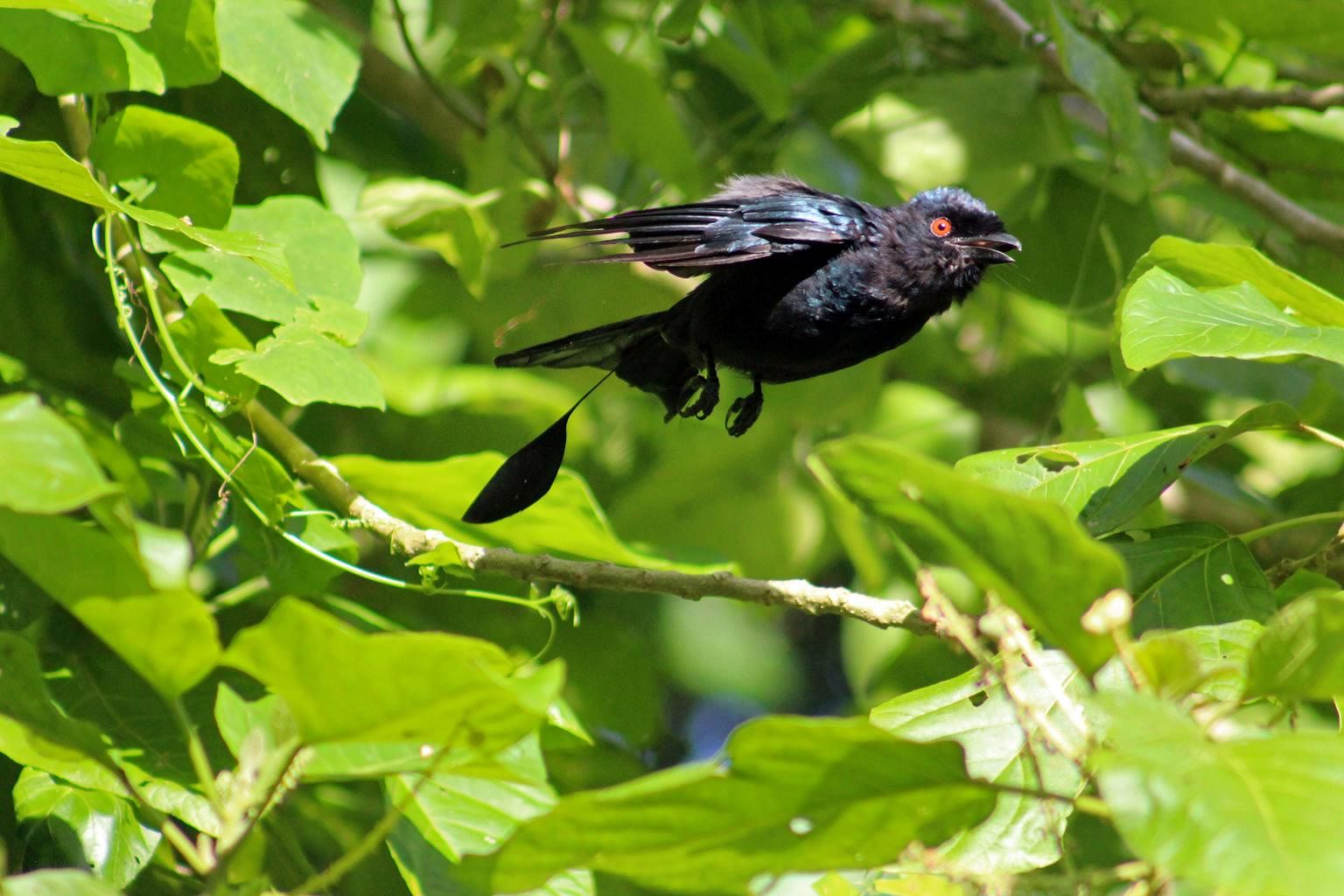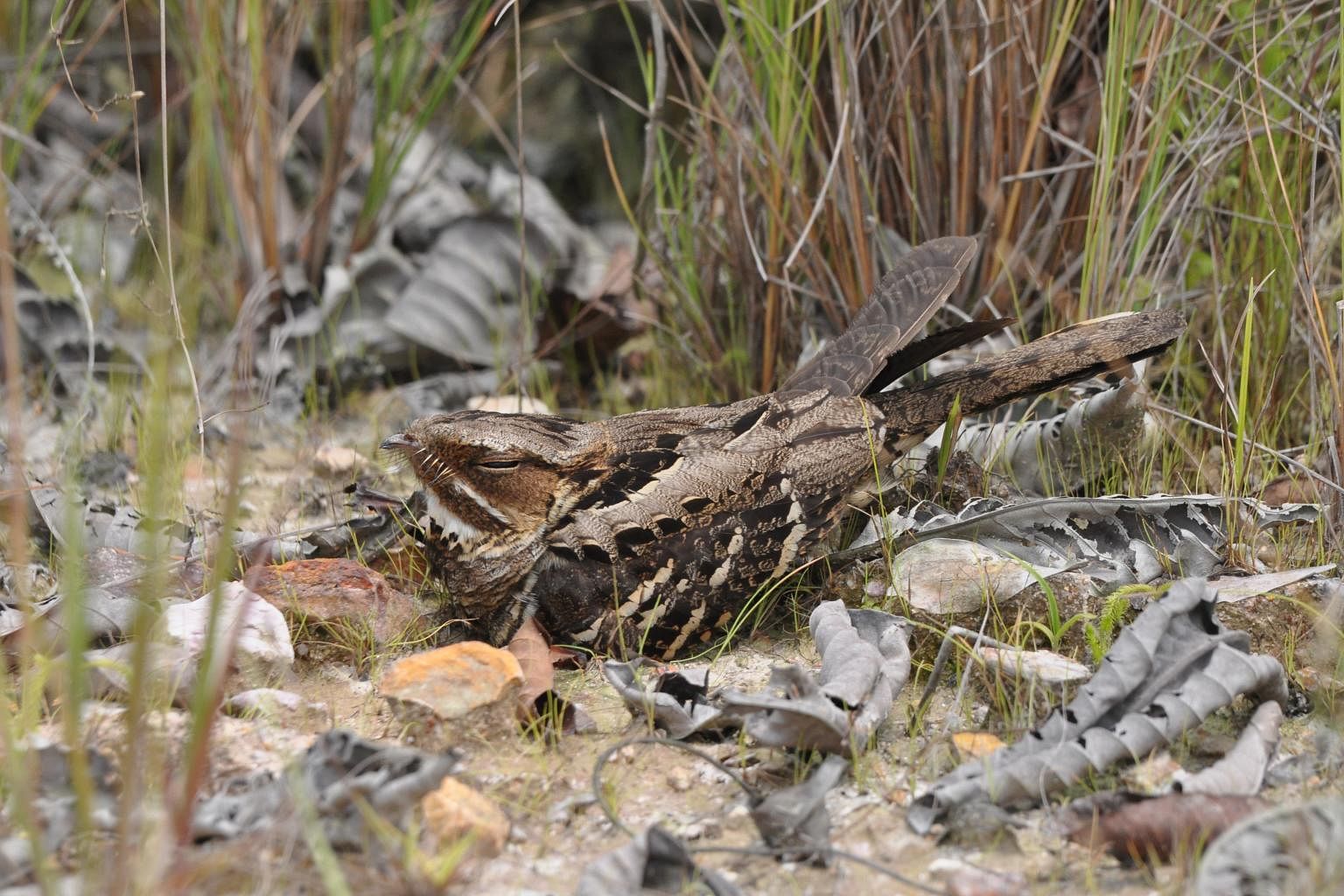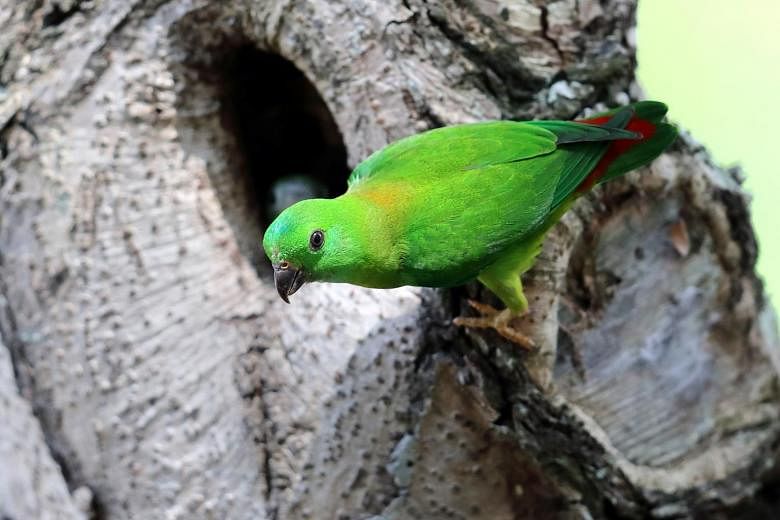SINGAPORE - The circuit breaker period has ended, and the city is slowly humming back to life.
But before the urban soundscape returns to its usual pitch, keep a ear out for the songs of Singapore's native birds.
These feathered creatures with attractive plumage have long attracted birdwatchers and photographers.
But many species also have unique, even melodious, calls.
The Straits Times highlights a few from the audio collection of Dr Yong Ding Li, a conservationist and bird researcher from the Nature Society (Singapore) (NSS).
Blue-crowned hanging parrot
This small parrot has bright green feathers with a dark blue crown on its head. It is an adaptable species, and can be found in nature reserves and parks in Singapore.
Originally a forest species, it has become increasingly common in Singapore in the past decade, and can even be seen in urban greenery in the Central Business District and Orchard Road, said Dr Yong.
Black-naped oriole
One of the more commonly sighted birds in Singapore, the black-naped oriole was featured on the $500 bill of the Bird Series currency notes issued by the Monetary Authority of Singapore between 1976 and 1984.
The birds are often seen in housing estates, as well as in parks and gardens.

White-bellied sea eagle
One of the most common raptors in Singapore, the white-bellied sea eagle builds its nest on tall structures, such as trees peeking through the forest canopy.
The eagles feed on seafood such as fish and crabs, and have been seen dropping crabs from a height to break their shells before eating them.
They are often spotted near water bodies in nature areas, such as in Changi and around the Southern Islands, as well as in downtown Singapore near Marina Bay.
Nests have been spotted in urban parks such as Fort Canning Park. They are also regularly seen at MacRitchie Reservoir and Pandan Reservoir.

Changeable hawk eagle
The first instances of this bird nesting in Singapore were documented by Henry Ridley, the first director of the Singapore Botanic Gardens, in the 1890s.
Later, an NSS-supported survey in 2010-2011 found at least nine pairs nesting outside the nature reserves and military training areas.
It is now regarded as a rare resident breeder, although anecdotal evidence suggests that they are adapting well and can be increasingly heard in urban areas.

Long-tailed parakeet
This species has a loud screech. As they travel in large flocks in the evening, they are often heard more than seen.
This bird is considered globally threatened, but seems to be doing well in Singapore.
The parakeet was the most numerous parrot species recorded during the NSS Bird Group's annual count in 2018. A total of 899 of them were seen then, making up 50.8 per cent of all parrots recorded during the count. The bird can be seen in parks, including Kent Ridge Park and Bishan Park.

Collared kingfisher
This bird has a cloak of turquoise feathers that makes it easy to spot.
The collared kingfisher is the most common kingfisher species in Singapore, and about one or two birds may be found in nearly every mangrove creek in the country, said Dr Yong.
The species is not particularly dependent on water sources, and is often found in parkland and well-wooded areas inland. A few pairs occur around Fort Canning. The bird feeds on insects and small vertebrates, such as cockroaches and lizards.

Common tailorbird
This bird has feathers that are duller in colour compared with other flamboyant birds in Singapore, but what it lacks in appearance, it makes up with its workmanship.
The tailorbird earned its name from the way it builds its nest by stitching leaves together. Its repetitive call may also often be heard in urban areas.
One of four species of tailorbirds that can be found in Singapore, the common tailorbird is the most widespread, and can be found in most housing estates and parks, keeping to overgrown areas and parkland.

Crimson sunbird
Voted the national bird of Singapore in a poll conducted by the NSS in 2015, this bird looks like a flamenco dancer with its feathers of black and red.
It prefers areas with thicker vegetation, and is more often sighted in places such as Singapore's central nature reserves, offshore Pulau Ubin, as well as at the Singapore Botanic Gardens.

Greater racket-tailed drongo
This bird is another elegant-looking forest denizen, with an iridescent sheen to its feathers and two prominent tail streamers. But it can be mischievous - and loud.
It is known for mimicking the calls of other birds and even mammals, such as the long-tailed macaque.
Scientists are still not sure why they do this, but one possibility is that doing so allows them to get more food when they forage in large flocks comprising other species.
Ornithologist David Tan said he once spent 15 minutes looking for a changeable hawk eagle after hearing its call around the Dairy Farm area, only to realise it was a drongo doing a perfect imitation.

Large-tailed nightjar
This bird has a call that sounds like the honk of a car's horn.
A nocturnal species, it frequents cemeteries at night, and is known in Malaysia as burung tukang kubur, which means the graveyard nightjar.
Dr Yong said this is one of Singapore's most common nightbirds, and is often seen in well-wooded areas and parkland, occasionally wandering into housing estates.

Sources: David Tan, Infopedia, International Union for Conservation of Nature, Singaporebirds.com, Yong Ding Li


